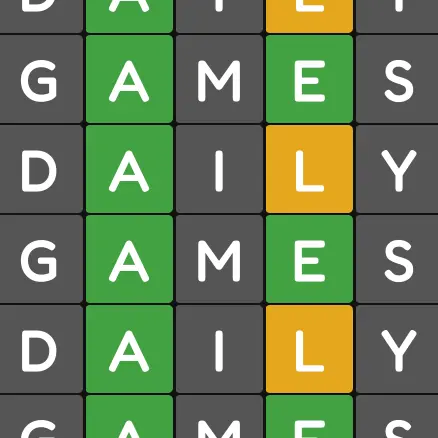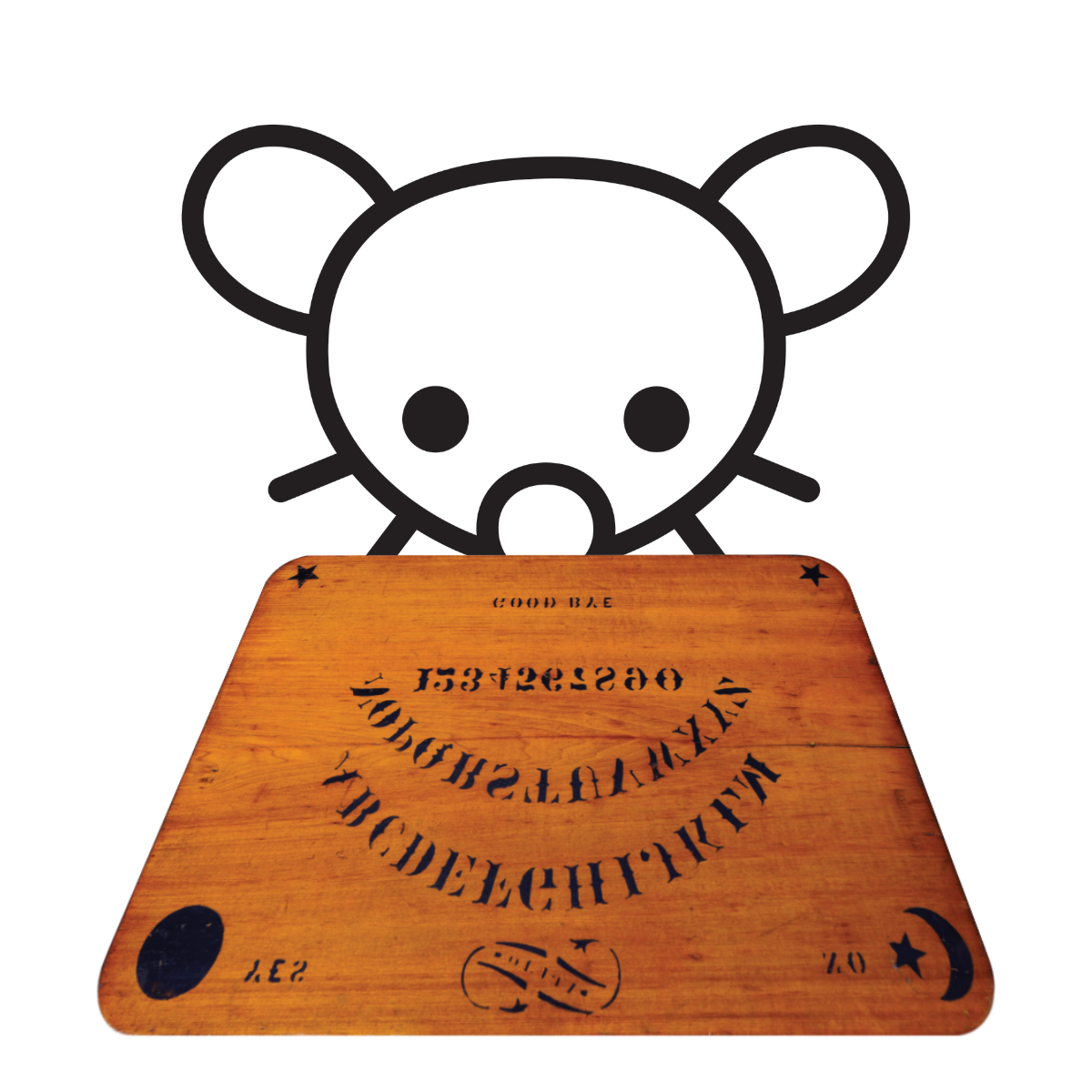Caelan Conrad did an investigation in this vein. They posed as a suicidal person to see how the AI therapist would talk them out of (or into) it. Some very serious and heavy stuff in the video, be warned. https://youtu.be/lfEJ4DbjZYg
- 0 Posts
- 27 Comments

 4·1 month ago
4·1 month agoLeslie Jones
My use case is pretty similar to yours, and I would recommend physically going to a store and seeing whatever (Logitech, as others suggested) mouse feels best in your hand. I think your hand preferences are pretty personal and important and that’s not something a stranger can assess for you.

 2·1 month ago
2·1 month agoTOEM is utterly delightful, very much worth the few hours it takes to enjoy it fully.
In a world where “Furry tiddy pics should not be allowed to exist” is a stance people can take, that collection is an ect of resistance, and one of solidarity between you and the artists who created it.
Tightrope, a daily trivia game | Britannica
Jun. 16, 2025
T I G H T R O P E ✅ ✅ ✅ ✅ ✅ ✅ ✅ ✅ ✅ 🎉
My Score: 2410
https://www.britannica.com/quiz/tightrope
New personal best!
Landlords should not be able to make that decision for you. Shame on them.
 3·3 months ago
3·3 months agoLego 2K Drive also did the “handful of open worlds” thing in much the same way.

 7·4 months ago
7·4 months ago“You’ve been right all along”
From what I’ve seen, that’s the spin coming from the participants themselves.

 9·7 months ago
9·7 months agoThe point you make is important and valid, but I would like to correct the specific numbers for the audience watching from home. 100*2000 is 200 thousand, not two million, which comes to 1/10 millionth of the goal, or 0.00001%. Using the $1000 budget metaphor, that would make 1/10000 of a dollar or 1/100 of a cent.
Don’t feel bad about missing a zero here or there, especially early in the day <3

 17·7 months ago
17·7 months agoSpeaking as a researcher in the AI/ML space, you see an interesting divergence at the upper end of familiarity. Some focus on the rapid recent growth of the technology and are quite enthusiastic about it, but others (myself included) focus much more on its limitations, especially driven by the type/quality of the training data used to make the models. I think it comes from different backgrounds prior to learning the tech. Computer science people tend to be in group one, whereas other scientists (biologists, physicists…) that adopt ML as a tool are more likely to be in group two. To be clear, all of this is my personal experience from personal interactions and literature review in graduate school, not some large scale survey.
∆G = ∆H - T∆S
∆G is the change in Gibb’s free energy. If it is negative for a process, the process will happen spontaneously. If it is 0, the process is at equilibrium. If positive, the process will not occur unless coupled to another process to make total ∆G ≤ 0.
∆H is the change in enthalpy, the heat energy of the process. If it is negative, the process releases heat to the environment, getting hotter. If positive, it absorbs heat from the environment, becoming colder. If that feels counterintuitive, remember that you as the observer are also the environment.
T is temperature in Kelvin.
∆S is entropy. Entropy is hard to rigorously define, but loosely it represents a state of disorder. A well mixed solution has high entropy, since the degrees of freedom within the mixture are high. A concentration gradient (high salt on one side of a membrane, lower on the other) has lower entropy because the existence of that gradient restricts those degrees of chemical freedom. A good rule of thumb is that if a barrier is required to maintain a state of things, it is a lower entropy state than what is possible.
Put that all together, and we can think about the question again. ∆H is close to zero for the process. It will do some slight cooling, but that has more to do with evaporation than anything else. Temperature is unknown but doesn’t affect the sign of ∆G if ∆H is close to zero. That means ∆S is our main driver. In the case of a plant, there is a gradient, with more salt inside the root than outside it. As such, in order to increase entropy and therefore have a negative ∆G, water moves from a low-salt environment to a high-salt environment. This brings water into the root and in doing so creates water pressure that forces the water upward as long as it has a path to do so.
The logic is similar but simpler for a piece of paper sucking up water, as the gradient is caused by the paper being dry and therefore creating a gradient in the amount of water.
It always feels good to get them all one after the other.
6️⃣5️⃣ 7️⃣4️⃣ m-w.com/games/quordle/ ⬜🟩⬜⬜🟨 ⬜🟨⬜⬜⬜ ⬜⬜⬜⬜🟨 🟨⬜⬜⬜🟨 ⬜⬜🟩⬜⬜ ⬜⬜🟩⬜⬜ ⬜⬜🟩🟨🟩 ⬜⬜🟩🟩🟩 ⬜⬜🟩🟨🟩 🟩🟩🟩🟩🟩 🟩🟩🟩🟩🟩 ⬛⬛⬛⬛⬛ 🟩🟨⬜🟨⬜ 🟩🟨⬜⬜⬜ ⬜🟩⬜⬜⬜ ⬜⬜⬜⬜🟨 ⬜⬜⬜⬜⬜ ⬜🟩🟩⬜⬜ 🟩⬜⬜⬜🟩 🟩🟩🟩🟩🟩 ⬜⬜⬜⬜🟩 ⬛⬛⬛⬛⬛ ⬜⬜⬜⬜🟩 ⬛⬛⬛⬛⬛ 🟩🟩🟩🟩🟩 ⬛⬛⬛⬛⬛

 10·1 year ago
10·1 year agoI always start with Penis, and on a 0/0 I will typically follow up with caulk. I was overjoyed when the word was caulk.
We’ll Meet Again In My Ass
Wordle 1,163 4/6 ⬛🟨⬛⬛🟨 🟩⬛🟩⬛🟩 🟩🟨🟩🟨🟩 🟩🟩🟩🟩🟩
8️⃣4️⃣ 6️⃣7️⃣ quordle.com ⬜🟨⬜⬜⬜ ⬜⬜🟩⬜⬜ ⬜🟨⬜⬜⬜ ⬜⬜⬜🟨⬜ ⬜⬜⬜⬜⬜ 🟩⬜⬜🟩🟩 ⬜⬜⬜⬜⬜ 🟩🟩🟩🟩🟩 ⬜🟨⬜⬜🟨 ⬛⬛⬛⬛⬛ ⬜🟨⬜⬜🟨 ⬛⬛⬛⬛⬛ ⬜🟩⬜⬜⬜ ⬛⬛⬛⬛⬛ 🟩🟩🟩🟩🟩 ⬛⬛⬛⬛⬛ ⬜🟨⬜🟨⬜ 🟨⬜⬜⬜⬜ ⬜🟩⬜⬜🟨 ⬜⬜⬜🟨🟨 ⬜⬜⬜⬜⬜ ⬜⬜⬜⬜⬜ ⬜⬜⬜⬜⬜ ⬜🟨⬜⬜⬜ 🟩🟩🟩⬜🟩 🟩⬜⬜⬜⬜ 🟩🟩🟩🟩🟩 🟩⬜⬜⬜⬜ ⬛⬛⬛⬛⬛ 🟩🟩🟩🟩🟩





The issue with this style of lane design is it basically doubles the amount of lane changes that lane experiences, which can make it the most dangerous possible space if exits are close together. I’ve lived around Dallas. It’s scary.